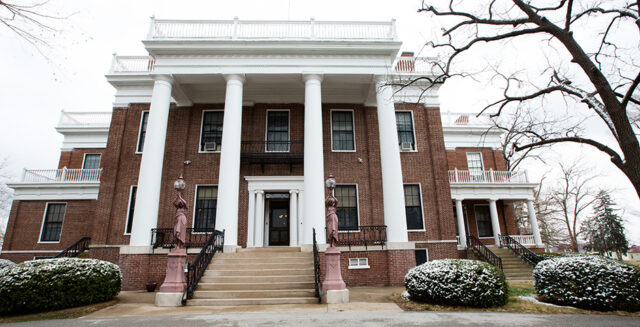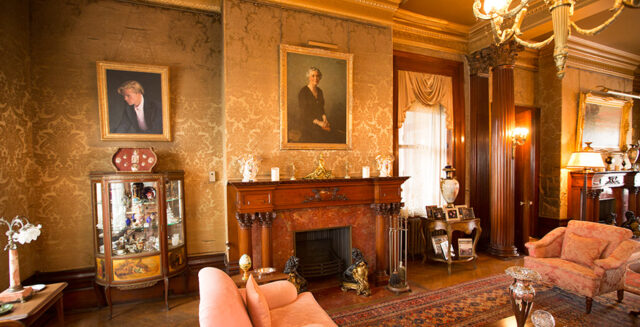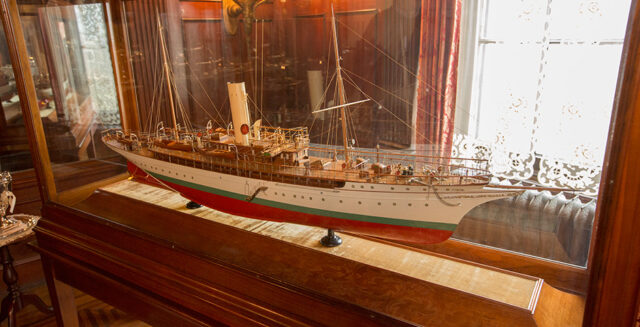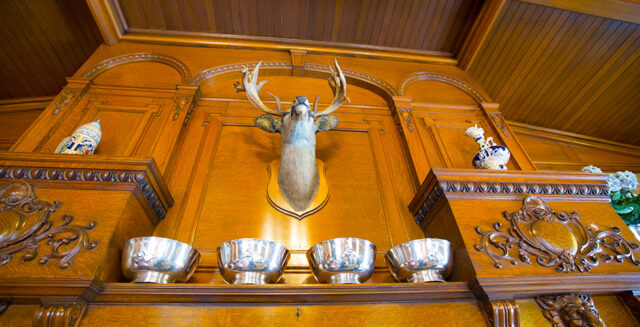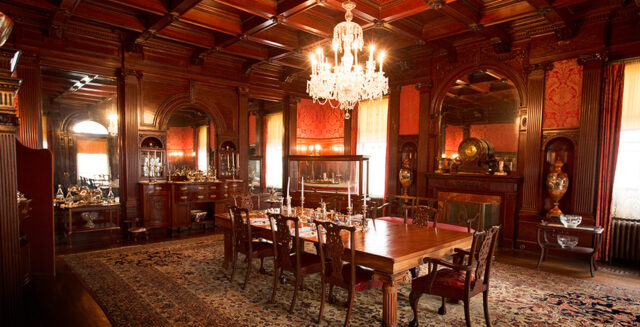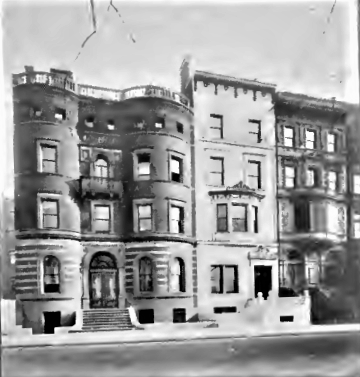Lamon V. Harkness King of Standardbred Horses
- Don Schueler
- May 2, 2023
- 8 min read
Updated: Apr 16
Check out the "AI Lamon" video above and let us know what you think of this AI approach to having a historical figure animated to read out their history.
Summary
Lamon Vanderburgh Harkness (January 6, 1850 – January 17, 1915) was an American businessman and one of the largest stockholders in Standard Oil. He became involved with Standard Oil through his father, Stephen V. Harkness, who was a primary silent investor in the formation of Standard Oil.
Early life
Lamon was born on January 6, 1850, in Bellevue, Ohio. His parents were Stephen Vanderburgh Harkness (1818-1888) and his first wife, Laura Harkness (née Osborne) (1815-1852). Unfortunately, Lamon lost his mother at the young age of two in 1852. Stephen then remarried Anna M. Harkness (née Richardson) in 1854.

The Stephen Harkness family relocated to Monroeville, Ohio in approximately 1860. By 1865, they moved from Monroeville to Cleveland, Ohio, while also acquiring a summer lake home in Willoughby, located near Cleveland. Stephen and Anna Harkness had four children: Lamon, Charles, Florence, and Edward. Lamon was Stephen's son from his first marriage, while the other three children were born to Stephen and Anna. Charles was born in 1860, Florence was born in 1864, and Edward was born in 1874. The age gap between Lamon and Charles was 10 years, and the age difference between Lamon and Edward was 24 years.
Career
At the age of 16, Lamon bought a ranch outside of Eureka, Kansas at Spring Creek, Greenwood, Kansas. He entered the cattle business at the age of 19.


Around this same time, Lamon's father would make an investment with JD Rockefeller to start Standard Oil. This investment would soon change the lives of the whole Harkness family for generations to come.
Lamon married Martha (Mattie) Frances Johnson and they had 3 children, Lela, Harry, and Myrtle.

Standard Oil continued to grow and become a huge success. In 1887, Lamon moved to Kansas City, Missouri, where he dabbled in the banking business. However, in 1888, (Lamon was 38) Lamon's father Stephen passed away at the age of 69.

Lamon then decided to leave Kansas and go back east to settle in Greenwich, Connecticut, where he bought the William Avery Rockefeller mansion, One Elm, in 1891. The mansion was situated on 34 acres and had 22 bedrooms.

Following a trip to Kentucky in 1892, Lamon also acquired a 400-acre farm in Donerail, Kentucky (north of Lexington) called Walnut Hall Stock Farm. There, he developed a Standardbred horse breeding operation of major importance to the harness racing industry.
Lamon tore down the main house at One Elm in 1904 in anticipation of building a new home. Unfortunately, his dear wife Martha (known as Mattie) passed just a year later in 1905 while he was still in the planning process for the new home. He then lost interest in following up on his building plans and never started the new build. He left the carriage house above and although modified, it is still standing today, remodeled as a residence.


Horse breeding and Walnut Hall
In 1904, Walnut Hall had expanded to 2,000 acres and 100 mares. The farm became one of the best-known Standardbred farms in the world. The farm's Big Barn(see below) was built by Harkness in 1897 and is 476 feet long, and has 52 stalls, a sales area, and an auctioneer's block – and it's still in service 113 years later at the Kentucky Horse Park. When Harkness died in 1915, the then-5,000-acre farm with 1400 horses was passed to his heirs. Although sub-divided several times, part of which is now home to the Kentucky Horse Park, Walnut Hall Stock Farm remains in the hands of his descendants.


In recognition of his contribution to the industry, in 1958 Lamon Harkness was inducted posthumously into the Harness Racing Hall of Fame.


Walnut Hall Today
New York Townhouse
In 1895, Lamon bought a New York townhouse at 933 Fifth Avenue in New York City along with a carriage house. One reason for this townhouse was so his daughters Myrtle and Lela could attend the Ely School there on Riverside Drive (the school later moved to Greenwich). The family didn't spend much time here and once his wife Mattie passed away he was never in the home. It would later become a bone of contention with the New York tax commission who tried to prove he was a New York resident and as such his estate would pay New York taxes. There was a similar effort by the State of California to prove he was a resident there to collect taxes. In the end, both of these suits determined his home was in Lexington, Kentucky at Walnut Hall.

933 Fifth Avenue, New York, NY
Collins' Both Sides of Fifth Avenue, 1910 (copyright expired) - Architecture & Building, October 16, 1897 (copyright expired)
You can see more about the history of the 933 Fifth Avenue at Daytonian in Manhattan.
The Hamptons
Lamon gave his daughter Lela a summer house in East Hampton on Long Island as a wedding gift.

Lamon also bought a home nearby since he planned to be close to Lela and the grandchildren for the summers Unfortunately, he did not live long enough to be able to enjoy it. The deed arrived after he had passed away.
Yachting and Travel
Lamon was well-known as a yachtsman. He owned the Wakiva which became part of the United States Navy between 1917 and 1918 and had war service during World War I.
He was a member of The New York Athletic Club, Columbia Yacht Club, The New York Yacht Club, and the Greenwich Indian Harbor Yacht Club.

In 1909, during one of his adventures on the Wakiva, Lamon met up with Rear Admiral Peary on his way to the North Pole. Here are Peary's notes about the chance encounter.

THE NORTH POLE
ITS DISCOVERY IN 1909 UNDER THE AUSPICES OF THE PEARY ARCTIC CLUB
BY
ROBERT E. PEARY
At Cape St. Charles we dropped anchor in front of the whaling station. Two whales had been captured there the day before, and I immediately bought one of them as food for the dogs. This meat was stowed on the quarter-deck of the Roosevelt. There are several of these "whale factories" on the Labrador coast. They send out a fast steel steamer, with a harpoon gun at the bow. When a whale is sighted they give chase, and when near enough discharge into the monster a harpoon with an explosive bomb attached. The explosion kills him. Then he is lashed alongside, towed into the station, hauled out on the timber ways, and there cut up, every part of the enormous carcass being utilized for some commercial purpose.
We stopped again at Hawks Harbor, where the Erik, our auxiliary supply steamer, was awaiting us with some twenty-five tons of whale meat on board; and an hour or two later, a beautiful white yacht followed us in. I recognized her as Harkness's Wakiva of the New York Yacht Club. Twice during the winter, she had lain close to the Roosevelt in New York, at the East Twenty-fourth Street pier, coaling between her voyages; and now, by a strange chance, the two vessels lay side by side again in this little out-of-the-way harbor on the Labrador coast. No two ships could be more unlike than these two: one white as snow, her brasswork glittering in the sun, speedy, light as an arrow; the other black, slow, heavy, almost as solid as a rock—each built for a special purpose and adapted to that purpose.
Mr. Harkness and a party of friends, including several ladies, came on board the Roosevelt, and the dainty dresses of our feminine guests further accentuated the blackness, the strength, and the not overly clean condition of our ship.
California Dreaming
In 1898 Lamon's wife Martha and daughter, Myrtle were having health challenges. So they started traveling to sunny California for the winter. They initially stayed at Hotel Green in Pasadena. It's unclear, but possible that Myrtle met A. Kingsley Macomber on this trip.
Myrtle married A. Kingsley "King" Macomber a year later in 1899.

A small part of this complex Hotel is still standing today as a Castle Green condominium.

More Info on Castle Green here:
The Harknesses then purchased a home in Pasadena in 1900.

Interior photos of 1201 S. Orange Grove, Pasadena, CA.

Myrtle and Kingsley Macomber bought Paicines ranch in 1906. Lamon left Pasadena in 1906 and from then on, spent less time in California, until his visits to Paicines Ranch in 1913 and then in 1914-1915.

Final Rest
Lamon passed away at Paicines Ranch in 1915, leaving an estate of approximately $100 million ($2.75 Billion in 2021 dollars). Predeceased by his wife, they are buried together in Woodlawn Cemetery in The Bronx, New York.
The LV Harkness mausoleum ended up being used temporarily by Charles W. Harkness upon his death as well as William L. Harkness. After Mary Warden Harkness passed, she was interred at her family mausoleum in Pennsylvania, and Charles Harkness was then relocated to be there with his wife. William Harkness remained there with Lamon until his mausoleum was completed...about five years after he passed. William's final resting place is very nearby to Lamon's.

Also nearby is the Edward and Mary Harkness mausoleum.


Tax suit
With multiple residences, including New York City as well as Kentucky, California, and Connecticut the question of where inheritance taxes should be paid came into play upon L.V.'s death. The case went to the State Supreme Court and The Harkness Estate was successful in defending the assertion that he was not a resident of New York upon his death.
Detailed documentation of this legal proceeding can be found here. It's quite an interesting (long) read.

Additionally there were proceedings in California regarding taxes and residency. Those details are here.



